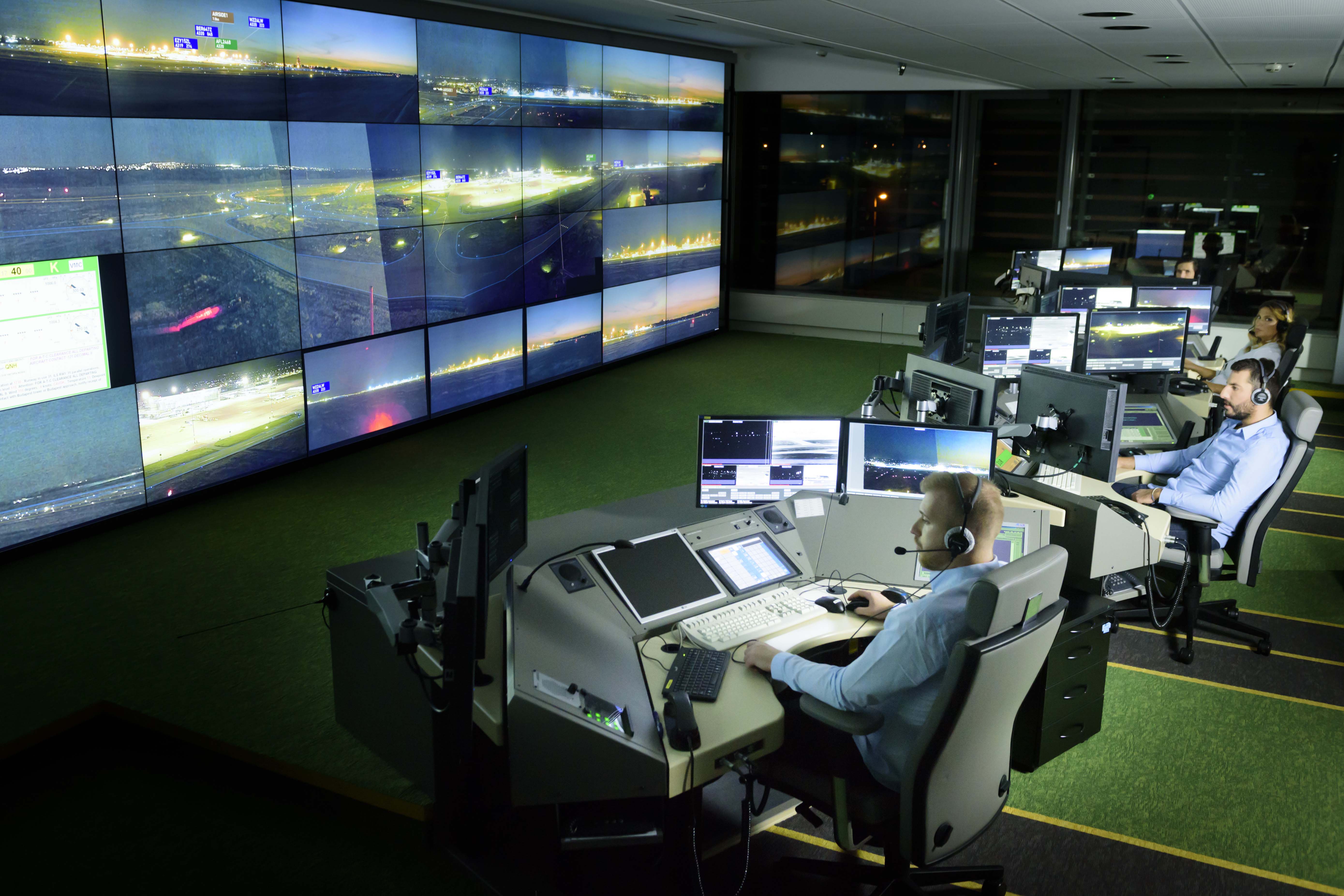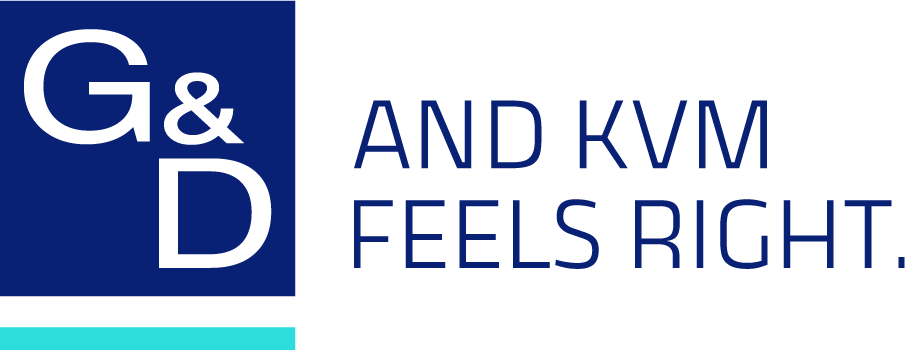KVM solutions for control rooms in remote towers
| Company | Guntermann & Drunck GmbH |
|---|---|
| Date | 30.01.2019 |
More ergonomic workplaces and centralized computer technology remotely operated in real time – possible thanks to KVM
The idea of remote towers is not really new, but more relevant than ever as air traffic is more and more frequently monitored from a distance. Small airports with low air traffic are already controlled remotely from tower centers to bundle capacities and use them more efficiently. Thanks to RTC concepts, arrivals and departures as well as aircraft movements on the apron can be controlled remotely. High-resolution infrared cameras record the flight movements and all events on runways within a radius of 360 degrees and transmit the high-resolution images to controllers sitting in a remote tower. State-of-the-art equipment in the control room combines the individual image segments to form a 360-degree overall image displayed on a giant screen or in a panorama window. This way controllers are able monitor the movements at airports located hundreds of kilometres away from them.
This innovative approach is becoming more and more widespread and the first airports are now fully controlled from a distance. Since December 2018, for example, German Air Traffic Control (DFS) has been managing Saarbrücken Airport completely remotely from Leipzig. Soon, the same concept will also be applied to the airports of German cities Erfurt, Dresden and Friedrichshafen.
What actually happens in a Remote Tower Control Center?
In the Control Center, controllers usually sit highly concentrated in front of several high-resolution screens. With no real visual contact to the runways, they rely completely on sophisticated technology. The events at the remote airport are continuously streamed on a huge screen wall. It is hard to imagine the amount of technology and computer capacity associated with this. Therefore, it is also unthinkable to house the entire computer equipment in the Remote Tower Center since the computers with their powerful processors are not only extremely loud, but also emit considerable waste heat. Placing several computers under the controller desk would also severely restrict ergonomics. Hence, one of the biggest questions in this context is how to bundle, relocate and centralize computer technology to make the working environment more ergonomic.
How to use KVM to remove computer technology from remote towers and operate it remotely in real time
KVM products from G&D enable the spatial separation between computers and operators who are then able to operate their equipment from a distance – in real-time, latency-free and without image losses. Well-known air navigation service providers such as DFS, Eurocontrol and Hungaro Control already use KVM products from German KVM manufacturers Guntermann & Drunck GmbH (G&D).
KVM is short for keyboard, video and mouse and refers to the interfaces of a computer. KVM computer and user modules use twisted pair cables, optical fibres or IP structures to access the equipment stored in a separate technology room at remote workstations almost latency-free and with a high resolution. The controllers operate the computers virtually from a distance, in real time, with maximum availability and without loss of image quality. In addition, they can operate several computers simultaneously with just one set of keyboard and mouse thus saving peripherals and benefitting from a more ergonomic working environment. For controllers, it makes no difference where their computers are located. The matrix system switches and extends computer signals without any loss and in real time thus allowing controllers to perform their tasks without even noticing any difference when working with their computers.
The ABC of KVM
KVM extenders extend computer signals 1:1 and consist of a computer module and a user module. Computers can be operated from distances of up to 10,000m while maintaining real-time performance. KVM switches in turn enable a 1:n connection, i.e. several computers can be operated user-friendly from one workstation with less peripherals. It becomes even more interesting when several controller stations access several computers at the same time as a flexible n:m connection so to speak. KVM matrix systems, which can flexibly map even the largest IT installations, offer this possibility. A matrix system consists of a central module and several computer and user modules that make the computers available to the users in real time.
With the help of G&D’s KVM matrix systems, highly flexible remote tower centers can be implemented and, if necessary, several dozens or even hundreds of computers and workstations can be interconnected. The systems are extremely flexible and can be configured according to the application’s requirements.
When it comes to air traffic control, the highest level of security is an absolute must. Hence, there are high demands on the security of both the equipment and the redundant components. Thanks to KVM, exact requirements for full redundancy can be implemented, whereby both the computers and the matrix system can be designed redundantly. As hardware switches, KVM systems only access the computer’s standard interfaces and therefore do not require any software installation – another important aspect especially with regard to cyber security.
Preventive system health management through SNMP and monitoring
Thanks to their monitoring function, G&D KVM devices monitor themselves. Administrators can view information about the connected peripherals and their status at any time. Using SNMP, the systems can be observed preventively. The monitored values are sent as SNMP trap and are then made available to the technical personnel. Technicians can use SNMP-GET to query values and thus monitor the system conditions of the KVM devices and the connected peripherals. Monitoring the operating conditions of all KVM components, SNMP ensures the automatic switching between main and redundant computer.
G&D’s KVM systems help air navigation service providers optimize their IT systems to ensure efficient RTC operations with increasing productivity and improved flight planning accuracy – while maintaining the same high level of flexibility and security.


